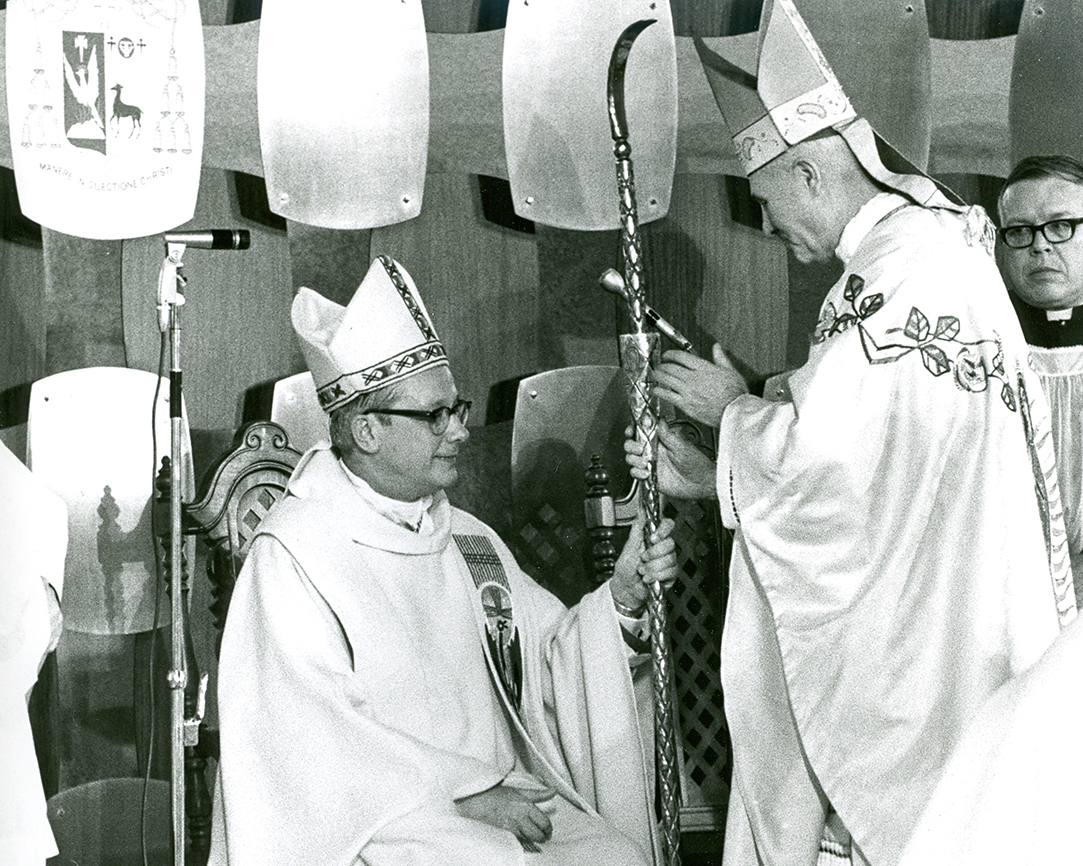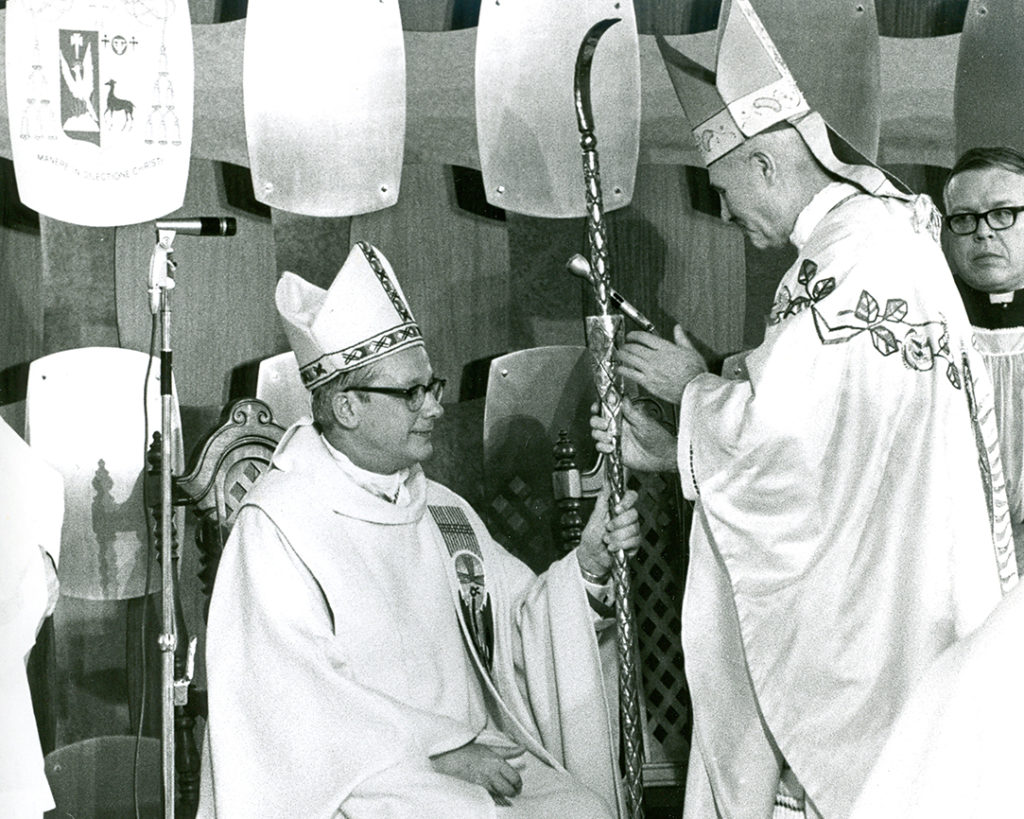
The changes wrought by Vatican II were underway, Lyndon B. Johnson was in the White House, the Phoenix Suns were in the midst of their first season and the population of Phoenix stood at a mere 580,000. Such was the scene when the Roman Catholic Diocese of Phoenix was established Dec. 2, 1969 by St. Paul VI.
Fifty years later, the population has nearly tripled and the remarkable expansion of the Diocese of Phoenix continues to unfold and flourish.
Carved from the Diocese of Tucson and the Diocese of Gallup, New Mexico, the new Catholic community serving central and northern Arizona was born with a solid infrastructure of more than 40 parishes, 15 Catholic elementary schools, three Catholic high schools, a Catholic hospital, and charitable organizations like the Society of St. Vincent de Paul and Catholic Charities already in place. The oldest church in Phoenix, known today as St. Mary’s Basilica, was established in 1881. The local Church was built on the courageous witness and service of the Franciscan, Jesuit and other missionary priests and sisters who brought the Catholic faith to the American Southwest.
Early Missionaries
But it was the sons and daughters of the Emerald Isle who greeted Bishop Edward A. McCarthy when he arrived as the first leader of the Diocese of Phoenix in 1969. Bishop McCarthy was welcomed by a substantial contingent of Irish-born missionary priests who had been recruited by the late Msgr. John McMahon in the years following World War II. Religious sisters from Ireland were also here, caring for the sick and teaching the faith.
Fr. David Sanfilippo, Vicar for Priests, reflected on the blessing of clergy who left their homeland to serve in the far-flung desert. Today, nearly 50 percent of priests in the diocese are from other countries.
“Without them, we would not have had sufficient clergy to provide the sacraments and pastoral care for the people of God in our growing diocese,” Fr. Sanfilippo said, “but God in His goodness is providing for His people through our local clergy and international priests.”
Many parishes in the Diocese of Phoenix now have priests and pastors from Mexico and Central America, the African continent, from Uganda to Nigeria and Zimbabwe, as well as from India and the Philippines.
Home-grown vocation stories were long a reality, too. Claretian Father John Anthony Moreno was the first to be ordained in newly drawn diocesan boundaries. He was ordained in January 1970 at Immaculate Heart of Mary Parish. William Parenteau and Robert Skagen followed close behind with ordination to diocesan priesthood in May that year at Ss. Simon and Jude Cathedral.
Prior to the establishment of the Diocese of Phoenix, 17 congregations of women religious were already serving in various capacities. The Loreto Sisters (Institute of the Blessed Virgin Mary) from Ireland arrived in 1954 when Ss. Simon and Jude Parish and School belonged to the Diocese of Tucson. Five decades later, their community still serves. The Sisters of Charity of the Blessed Virgin Mary preceded them in 1943 when the Jesuits at St. Francis Xavier Parish invited them to help establish the parish school as well as Xavier College Preparatory. The BVM Sisters still serve at Xavier today.
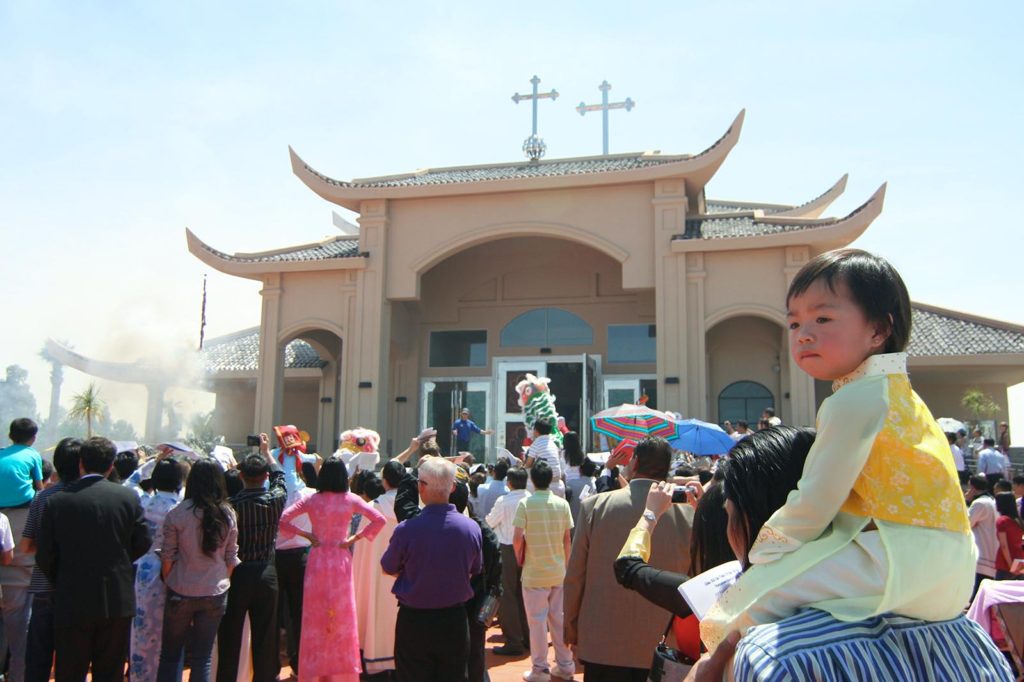

Parish Growth
When Bishop McCarthy landed at Sky Harbor in Phoenix, some 2,000 faithful gathered to welcome him. One of his first decisions was selecting a parish to become the cathedral. He chose Ss. Simon and Jude in north Phoenix.
The seven years Bishop McCarthy led the diocese were characterized by tremendous growth. Nineteen parishes were founded, including Our Lady of Joy in Carefree, St. Thomas Aquinas in Avondale, St. Margaret in Tempe and St. Augustine in Phoenix. The first parish established under the founding bishop was Resurrection in 1970 with opening Masses held at nearby Mesa Community College.
Armando Ruiz, whose family members have been active parishioners at St. Catherine of Siena in south Phoenix since 1959, remembers the early years of the diocese. Ruiz’s parents, Reyes and Estela, attended the first Cursillo retreats held in Phoenix.
“We grew up at Mount Claret Retreat Center,” Armando said. Each of the seven eventually made their own Cursillos and the elder Reyes went on to work in the diocese’s Hispanic ministry office. Part of his work involved visiting migrant farmworkers.
“He would go out to the camps and pass out rosaries and take priests out to hear confessions or do Masses,” Armando recalled. “He just reminded people of their faith when they were very far away from home and really isolated. A lot of them lived in the fields and he brought food and clothes.”
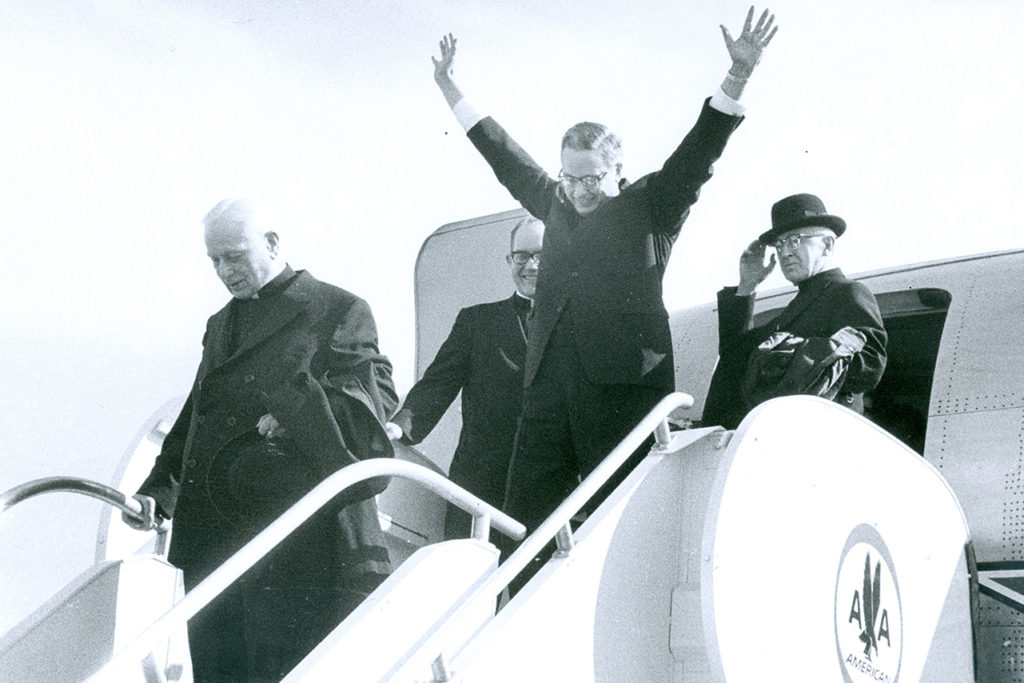

The Ruiz family also founded Mary’s Ministries.
“That was kind of an outgrowth of my parents’ initial ministry, which was talking to people about God, that He exists and loves us, and that the Blessed Virgin Mary has a special work and she loves us,” Armando said. “My father’s saying was ‘Be a saint.’”
Each member of the family found their niche, and the organization went on to become a non-profit focused on evangelization not just in Phoenix, but around the globe in Latin America, Africa, Europe and India.
One of the challenges Bishop McCarthy faced was the lack of a Catholic higher education. The Kino Catechetical Institute was established in 1972 at St. Agnes Parish, with courses offered at 28 locations around the Diocese of Phoenix. Today, the Kino Catechetical Institute continues its role educating the laity and future deacons and their wives. The presence of Catholic universities in the Diocese of Phoenix wouldn’t come until many years later with the arrival of the University of Mary in 2012, Benedictine University in 2013 and, most recently, Creighton University.
Call to Serve
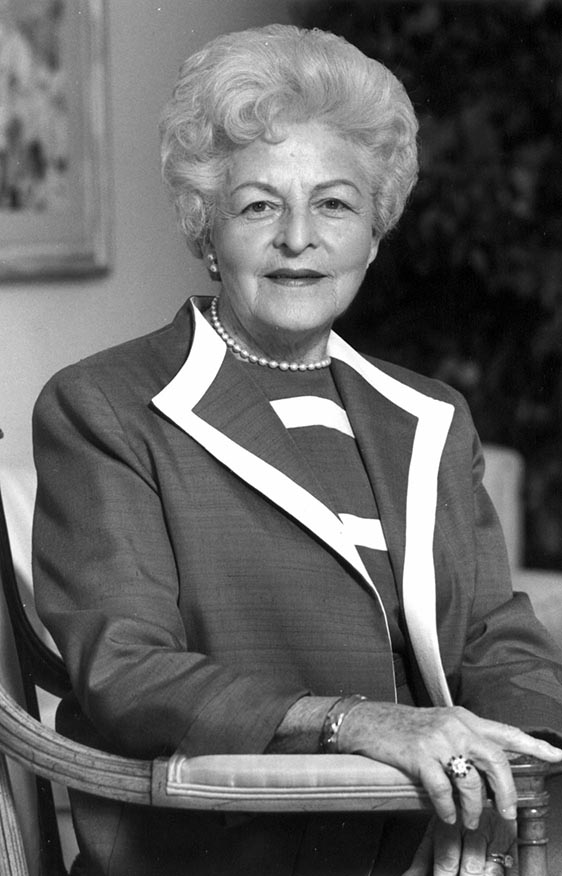

In an effort to augment the charitable work of the diocese, Bishop McCarthy established the Charity & Development Appeal in 1970. Msgr. John McMahon headed the first appeal, which brought in more than $845,000. The annual charitable appeal has grown as the needs of the community have, and by 2019 it was supporting 70 different ministries that feed, clothe, house and educate thousands. In 2019 the CDA raised $9.9 million.
In 2017, the diocese would launch the “Together Let Us Go Forth ~ Juntos Sigamos Adelante” campaign for evangelization and discipleship in response to the tremendous growth of the Church and its corresponding need to build a new high school, strengthen and expand Newman Centers, provide Catholic school tuition assistance and establish the Francis Mercy Fund, among other efforts. The goal is $100 million.
Donors to these campaigns have collectively built up the diocese into what it is today. A few key others did so on larger scales.
Virginia G. Piper lost her second husband in 1975 — both had key roles in Motorola — and she dedicated the remaining 24 years of her own life to philanthropy in the greater Phoenix area. The Virginia G. Piper Charitable Trust was established in 1995 and became one of the nation’s 100 largest foundations. The Catholic Church was among her beneficiaries with improvements to Catholic schools and the Foundation for Senior Living. The Diocesan Pastoral Center’s Virginia G. Piper Chapel, Xavier College Preparatory’s Performing Arts Center and the Society of St. Vincent de Paul’s Medical and Dental Clinic, among others, are all named for her.
Two local sports icons also gave significantly to St. Peter Native American Mission School in Bapchule. Bill Bidwill, the late owner of the Arizona Cardinals, funded the school’s transformation from a four-room adobe schoolhouse into a series of modular classrooms. His support also saved the sisters from having to abandon their convent over a deteriorating roof. The project finished under budget and Bidwill instructed the sisters keep the money for future endeavors.
Baseball Hall-of-Famer Joe Garagiola referred to the Franciscan Sisters of Christian Charity who run the school as “my kind of sisters.” He was actually out of state when Sr. Martha Mary Carpenter, principal, gave a talk at his Valley parish, but parishioners filled him in on the sisters and their fondness for sports. Garagiola became a frequent St. Peter visitor and facilitated a lengthy list of building repairs and new construction. It was reported that as of his death in 2016, the students still offered “Joe’s Prayer” twice a day: “Teach us O Lord, that every day, down every street, come chances to be God’s hands and feet.”
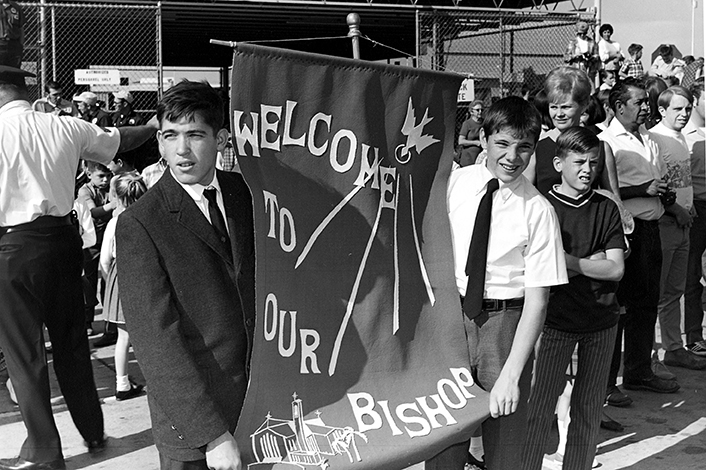

Impact of Education
In 1976, Bishop McCarthy was named archbishop of Miami and Bishop James S. Rausch, an auxiliary bishop from St. Cloud, Minnesota, succeeded him. During Bishop Rausch’s tenure, Arizona’s population surged by 50 percent from 1.7 million to 2.7 million. Five parishes were founded, including St. Timothy in Mesa, St. Joan of Arc in Phoenix and St. Patrick in Scottsdale.
Bishop Rausch died of a heart attack at 52 in May 1981, less than a week after the assassination attempt on St. John Paul II. Vicar General Msgr. Thomas J. O’Brien was appointed the new bishop of the Diocese of Phoenix six months later.
Bishop O’Brien’s tenure saw continued growth of the diocese, with 15 additional parishes founded, including St. James in Glendale, St. Steven in Sun Lakes, and St. Clare in Surprise. The growth of Catholic schools continued, as well. Reporting on the growth was the newly established newspaper of the diocese, The Catholic Sun, which published its first edition in 1985. Several years later, in 1992, MaryBeth Mueller was appointed superintendent of Catholic Schools. It was during her early years as superintendent that Bishop O’Brien created a Future Schools Trust Task Force.
During Mueller’s tenure, St. John XXIII in Scottsdale was established, as well as St. Timothy in Mesa, St. John Bosco in Phoenix and Notre Dame Preparatory in Scottsdale, following the 1989 closing of Gerard Catholic High School on Phoenix’s east side. Those years also included the closing of St. Mary’s Catholic School in 2002 in downtown. Mueller retired in 2018 after 30 years of service to the diocese.
These years also witnessed the establishment of unique charitable endeavors like Maggie’s Place, a home for pregnant women experiencing homelessness. Less than 20 years later, the brainchild of five lay women has blossomed into a network of four homes across the Valley, plus a thrift shop, transitional apartments in partnership with Catholic Charities Community Services, and a fifth home in Ohio.
André House, founded in 1984 by two Congregation of the Holy Cross priests to care for the homeless and working poor, has mushroomed to serve over 170,000 meals each year. The oasis of charity that stands near the Arizona State Capitol also provides more than 7,400 showers anually, and one of its directors would go on to become bishop of Tallahassee-Pensacola, Florida, Bishop William Wack.
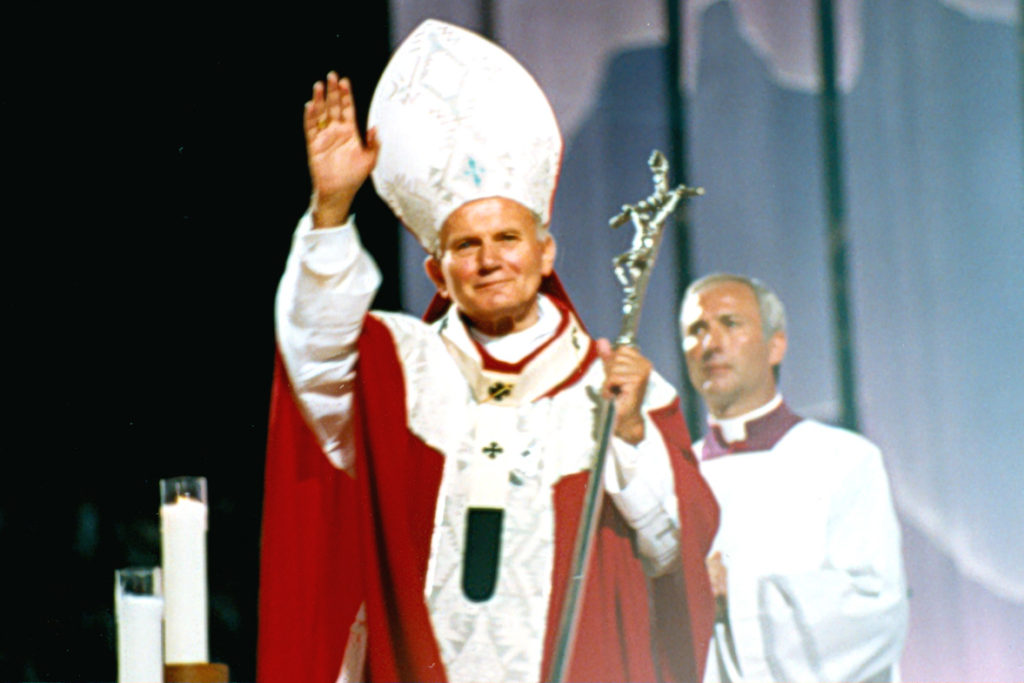

Historic Visits
A highlight for many longtime residents of Arizona was the Sept. 14, 1987, visit of St. John Paul II. The pontiff was greeted by 150,000 people who lined Central Avenue and 80,000 faithful who traveled from all over the Southwest and packed into Arizona State University’s Sun Devil Stadium for Mass.
A similarly exceptional highlight two years later was the visit of St. Teresa of Calcutta, the diminutive nun and Nobel laureate who wowed Arizonans with her humility and love. More than 15,000 of them piled into Veterans Memorial Coliseum for the chance to glimpse a woman known worldwide for her tender care of the poorest of the poor and her staunch defense of the sanctity of human life.


A New Era
But like the mythical bird for which Phoenix is named, the diocese has seen its share of devastation followed by rising from smoldering ashes, encompassing a paschal mystery of life, death and resurrection.
The early 2000s saw a slew of accusations against clergy nationwide as the sexual abuse scandal in the Church roiled. Some of those accused were serving, or had previously served, in the Diocese of Phoenix. It was a time of upheaval in the local Church that included the resignation of Bishop O’Brien in 2003. Archbishop Michael Sheehan of Santa Fe was named temporary apostolic administrator.
Into this storm stepped Bishop Thomas J. Olmsted, appointed by St. John Paul II as the fourth bishop of Phoenix on Nov. 25, 2003. From his modest roots growing up on a farm in Kansas and attending a one-room schoolhouse, Bishop Olmsted was ordained to the priesthood in 1973, studied canon law at the Gregorian University in Rome and worked closely with St. John Paul II in the Secretariat of State at the Vatican for several years. He became bishop of Wichita, Kansas in 1999, and was installed as bishop of Phoenix on Dec. 20, 2003. Known as a leader in the pro-life movement, one of his first actions was to pray alongside the faithful outside an abortion facility.
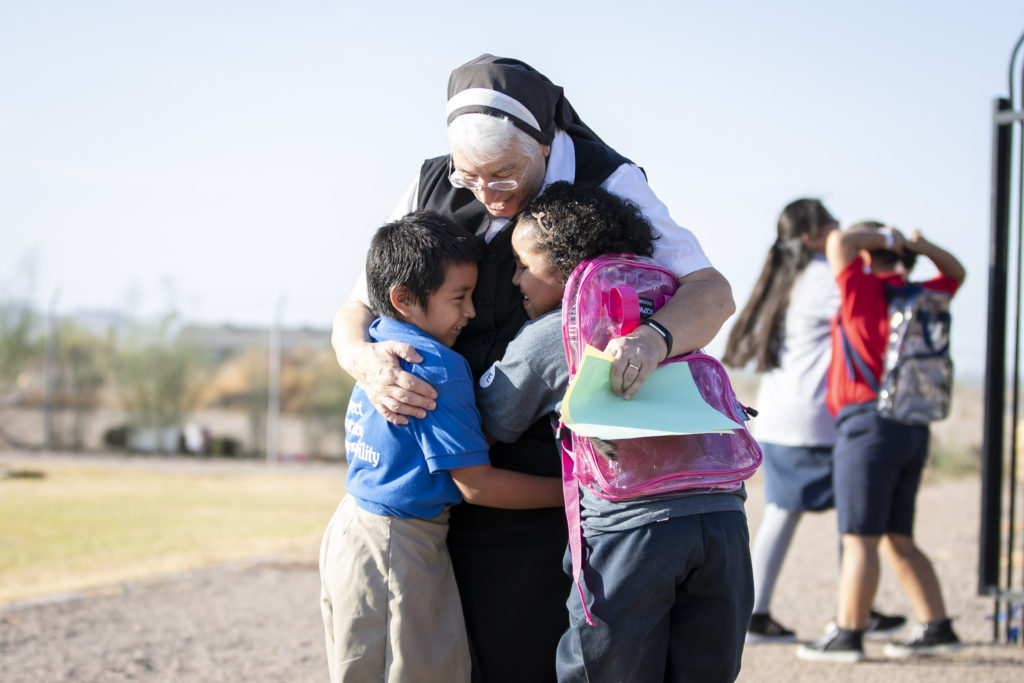

Gift of Religious Life
In his 16 years as bishop, the diocese has experienced a blossoming of religious life. Sr. Anthony Mary Diago, RSM, director of the Office of Consecrated Life, has witnessed firsthand the tremendous growth of religious communities in the diocese.
“It’s been a real blessing to be part of how he is bringing various communities with various charisms,” Sr. Anthony Mary said. “Religious life here is vibrant and growing.”
A number of younger religious communities began to make their home in the Diocese of Phoenix. From the Dominican Sisters of Mary, Mother of the Eucharist, with their devotion to Catholic education, to the Poor Clares of Perpetual Adoration and the establishment of their monastery in Tonopah, to the Argentinian-born Servidoras del Señor y de la Virgen Matará, who serve at Immaculate Heart of Mary and St. Anthony parishes, there’s a growing presence of women religious in the Diocese of Phoenix. The Dominican Sisters of St. Cecilia were invited to Phoenix to staff the diocese’s newest Catholic high School: St. John Paul II in Avondale, which opened in 2018.
Men’s communities have also been a staple of the diocese, with the aforementioned Congregation of Holy Cross, the Franciscan Order of Friars Minor having a presence from the earliest days of the Catholic Church in the Valley, the Claretians who still serve in Prescott and the Jesuits with their service to Catholic education. In 2016, the Franciscan Friars of the Holy Spirit were established as a society of apostolic life under the auspices of the Diocese of Phoenix. The Canons Regular of the Order of the Holy Cross, or Crosiers, have served in the diocese since 1983 and in 2007 moved their national provincial headquarters to Phoenix. Thirteen Crosiers assist at parishes throughout the diocese and serve the elderly, prisoners, veterans, immigrants and the poor.
The Very Rev. Thomas Enneking, OSC, conventual prior for the U.S. Crosiers, said the community’s fraternal life is what makes it unique, defining who the Crosiers are and how they serve.“Our charism is centered around living and working in community, celebrating the Liturgy of the Hours and daily Eucharist that is open to the public and touching suffering with hope through the broad range of our ministries,” Fr. Enneking said.
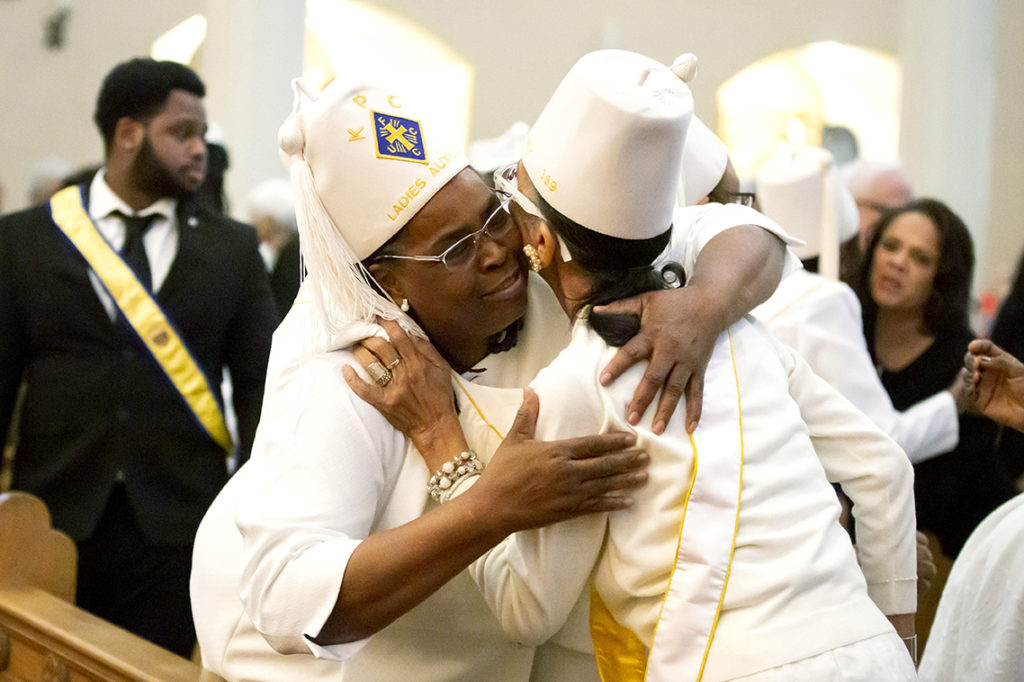

Globalization of Diocese
Over the years, the Diocese of Phoenix has also welcomed diverse ethnic groups within its borders. Eastern Rite Catholics including the Byzantine, Chaldean, Maronite, Melkite and Ukranian Churches, each with their own bishop or metropolitan. Catholics are able to attend Mass in at least two dozen languages from Spanish to Arabic to Tagalog and Vietnamese, and congregations have been built on ethnic groups such as Our Lady of Czestochowa in Phoenix, with Masses in Polish, or St. Columba Kim Mission in Chandler, with Masses in Korean.
Two men from the diocese’s diverse communities were trendsetters within the diaconate community. Nationally, it was Dcn. Fernando Vega of Tempe, an educator, who was the first Mexican American ordained a permanent deacon in the Catholic Church when the diocese saw its first ordination class in 1972.
Almost two decades later, Dcn. Alexander Roy, a Pima Indian from the Salt River Indian Reservation and volunteer chaplain at the Indian Medical Center in Phoenix, became the first Native American permanent deacon ordained for the diocese in 1991.
Recognizing the importance of the Hispanic community in the new diocese and the recognition of Our Lady of Guadalupe as the patroness of the Americas, Bishop McCarthy petitioned the Vatican to formally make her the patroness of the diocese. This led to a celebration Dec. 12, 1971 in which the diocese was formally consecrated to her.
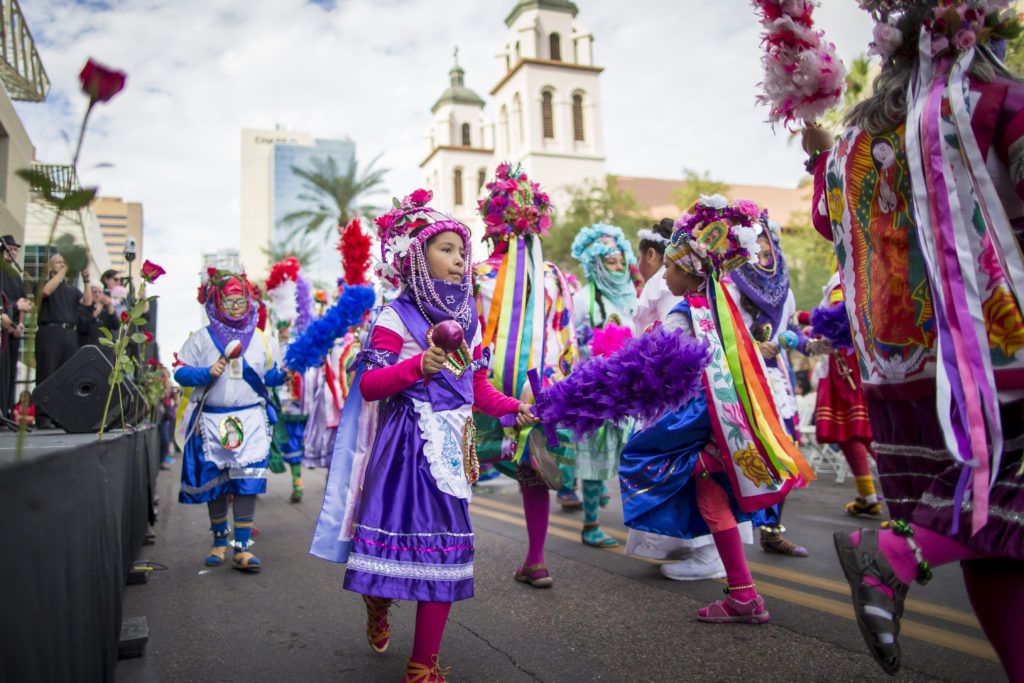

“The Mexican people of our diocese will rejoice at the warmth of the honoring of their familiar mother. The rest of us will rejoice at the honoring of the lady who became by the force of personality the Lady of the Americas,” read an article in the first edition of Alive magazine, the official diocesan publication at the time, promoting the event. “In this diocese, symbolized so appropriately by the Phoenix Bird in the official coat of arms, we have caught the special significance of the flames that surround the Lady of Guadalupe in her traditional picture.”
The Hispanic community continued to grow rapidly. In 1986, Bishop O’Brien mandated that seminarians learn Spanish as part of their preparation. The late Jose Robles, Jr., initially hired as the farm-worker outreach coordinator in the Office of Hispanic Ministry, later headed the office at a time when the number of parishes offering Spanish-language Masses rapidly grew. By 2002, 40 parishes in the diocese offered Mass in Spanish.
In 2006 the diocese began celebrating the annual “Honor Your Mother” celebration to honor Our Lady of Gudalupe and held annually on the Saturday before her feast day.
Regardless of their cultural heritage, Catholics across the Diocese of Phoenix have ventured out into the wider Church not just to serve, but to spread the faith. Sr. Sydney Moss, a Salesian Sister who professed perpetual vows in September, grew up in Tempe and went on mission trips to Mexico. Today, she’s leading the religious community’s efforts at sending missionaries abroad.
The 50th anniversary of the Diocese of Phoenix takes place in an era of continued growth and expansion.
Ambria Hammel contributed to this article.



